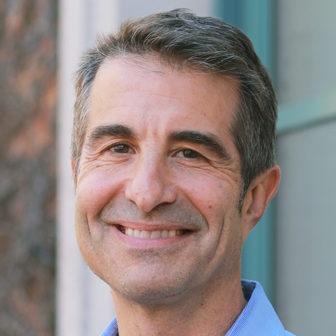![]() It is hard to imagine that three weeks ago the chief concern among youth advocates, as well as juvenile justice agencies across the country, continued to be how to keep young people in locked facilities safe from the spread of COVID-19. The tragic and brutal murder of George Floyd at the hands of the Minneapolis Police Department, and the resulting nationwide protests and calls for change, have reoriented our collective perspectives and attention. While criminal justice reform remains in focus, advocates and policymakers are now, understandably, focusing on police reform and accountability.
It is hard to imagine that three weeks ago the chief concern among youth advocates, as well as juvenile justice agencies across the country, continued to be how to keep young people in locked facilities safe from the spread of COVID-19. The tragic and brutal murder of George Floyd at the hands of the Minneapolis Police Department, and the resulting nationwide protests and calls for change, have reoriented our collective perspectives and attention. While criminal justice reform remains in focus, advocates and policymakers are now, understandably, focusing on police reform and accountability.

Andrew Block
At the same time, state agencies responsible for youth in custodial settings have worked hard, in collaboration with other stakeholders, to reduce populations in local detention settings and even in state facilities as well. More states are sharing data on the spread of the virus in their institutions, and, having used strict quarantine measures, are beginning to resume vital rehabilitative programming.
The Annie E. Casey Foundation reports that the percentage of declines in detention populations this spring equaled the total reductions that had taken place over the previous 13 years.
Even if the most acute problems and concerns about youth in custody from the first month of the pandemic have somewhat subsided (though of course not everywhere) or been replaced by other fears and concerns about police abuses, now is obviously not the time to lose focus.
Courts are taking more cases. Youth who had been prohibited from transferring from local detention centers to state facilities will begin to move again. Local practices that resulted in huge drops in detention populations may cease. Little by little, populations in state facilities will likely begin to rise again. As the recent Casey report notes, most of the detention decline was due to reduced admissions, and, after a flurry of releases in the early days of the pandemic, the rate of releases has slowed.
The question now should be how to use what has been learned to maintain, or continue to safely reduce, populations, and to serve youth remaining in custody well.
To think about the answer to this question, it is worth remembering what things were like earlier this spring.
Some releases, some hunkering
As government officials across the country grappled with the many challenges posed by COVID-19, they heard a growing chorus of concern for the well-being of confined youth in juvenile justice facilities across the country. Those fears were valid: The spread of a contagious virus is uniquely difficult to control in a secure facility with close, confined quarters in which staff must necessarily move between their communities and the facility. Moreover, the measures necessary to contain the virus contradicted what we know is paramount to rehabilitation: youth engagement, family connections, ample staffing and purposeful activity.
In some places, this understandable fear gave rise to lawsuits, protests, a flurry of press releases and general finger-pointing. Child advocates and family members accused juvenile justice systems of not being prepared for the pandemic, and put forward demands that were laudable, but sometimes contradictory — for example, stop the spread of the virus, but maintain visitation and programming as normal. Others — release all youth now — would have been extraordinarily ambitious even if we weren’t in the middle of a pandemic.
On their worst days, it can be the tendency for juvenile justice agencies during times like these to circle the wagons and hunker down, to not trust advocates or the media that covers them, and to withhold information for fear of it being used against them.
What got lost in that back and forth is that advocates and agencies usually share the same goals of youth and community safety and rehabilitation, and care deeply about children and families. Neither side wants youth to fall ill or to unnecessarily sit in locked facilities.
Advocates might be able to secure concessions through public pressure or litigation. Agencies proved they could successfully initiate population reductions and craft reentry plans, through their own authority and actions. But it will be far easier to sustain the actions and changes that have taken place thus far if all sides, in combination with other system stakeholders, come together.
For example, we should look to some of the collaborative approaches that states and localities have already taken to help guide the work ahead. In Michigan, diverse stakeholders ranging from the governor to local courts and attorneys worked together to reduce populations in local facilities.
In Maine, the state agency worked with researchers at the Vera Institute of Justice, local and national advocates, and other stakeholders to bring about a dramatic decrease in population at its Long Creek youth correctional facility. The work was so effective that the state and stakeholders are now looking at lessons learned as an opportunity to continue improving and reforming their system.
And on a local level, as the dramatic reductions in detention populations illustrate, multiple parties — law enforcement, prosecutors, defense counsel, judges and juvenile justice agencies — had to collectively and effectively change practices to safely reduce detention numbers.
Let’s keep up the momentum
What these and other examples demonstrate is the willingness of a diverse group of stakeholders, including the state and local administrative agencies, to work together during the crisis to improve outcomes and conditions for justice-involved youth in times of crisis. Only continued partnership and collaboration can continue this momentum when things get back to “normal.”
For example, to continue to accelerate releases, advocates should offer to work with state agencies to overcome barriers to releasing youth, such as getting cases back to court, and pushing prosecutors in jurisdictions with large numbers of youth in state custody to become part of this solution as well. This push should include efforts to truly limit the use of custodial settings to only those youth who pose the highest risk to public safety.
With the political cover and support of robust advocacy, agencies and other system stakeholders are likely to feel more emboldened, once this crisis passes, to continue to embrace new approaches to release decisions and planning, as well as alternatives to incarceration in the earlier stages of the court process.
Although the suspension of family visitation to limit the spread of the virus is perhaps the most glaring example of the disconnection of confined youth from their families and communities, even when visitation resumes the disconnection and barriers remain. Partnerships between state agencies and community-based advocates can be helpful here too, ensuring that as many families as possible have the information and tools they need to stay connected with their confined children. And if a child or family falls through the cracks, agencies must be responsive to individual requests for support, or even suggestions about how to improve accessibility and connection.
All too often court-involved youth, both when they remain in or return to their communities, experience educational failure or are pushed out, kicked out or locked out of school. The lack of meaningful learning opportunities during the pandemic will only exacerbate these problems and increase learning gaps. Given the vital role that education plays in successful youth development as well as successful reentry, youth advocates and juvenile justice agencies should collaborate here as well.
For example, advocates and attorneys, with appropriate referrals from the agencies, can compel local schools to take individual children back, or keep them in school. On a systemic level they should work together to advocate and insist that schools be welcoming and supportive places for court-involved young people.
While there are obviously many other strategies to pursue, the main point is this: When all sides work together, the youth in our justice system benefit. Part of the apparent strength of the protests over the murder of George Floyd is the diversity of the protestors — black and white, urban and rural, local and international. Unity of purpose creates power and opportunity.
Or, as Gladys Carrion and Mishi Farquee recently suggested in JJIE, if agencies and advocates can learn to trust and partner, we not only have a chance to safely weather this storm, but to come out the other side with a system that is safer, more effective and more humane.
Andrew Block is the former legal director of the JustChildren Program of the Legal Aid Justice Center in Charlottesville, Va., the former director of the Virginia Department of Juvenile Justice (2014-19) and the current director of the State and Local Government Policy Clinic at the University of Virginia School of Law. The views expressed here are his own.
